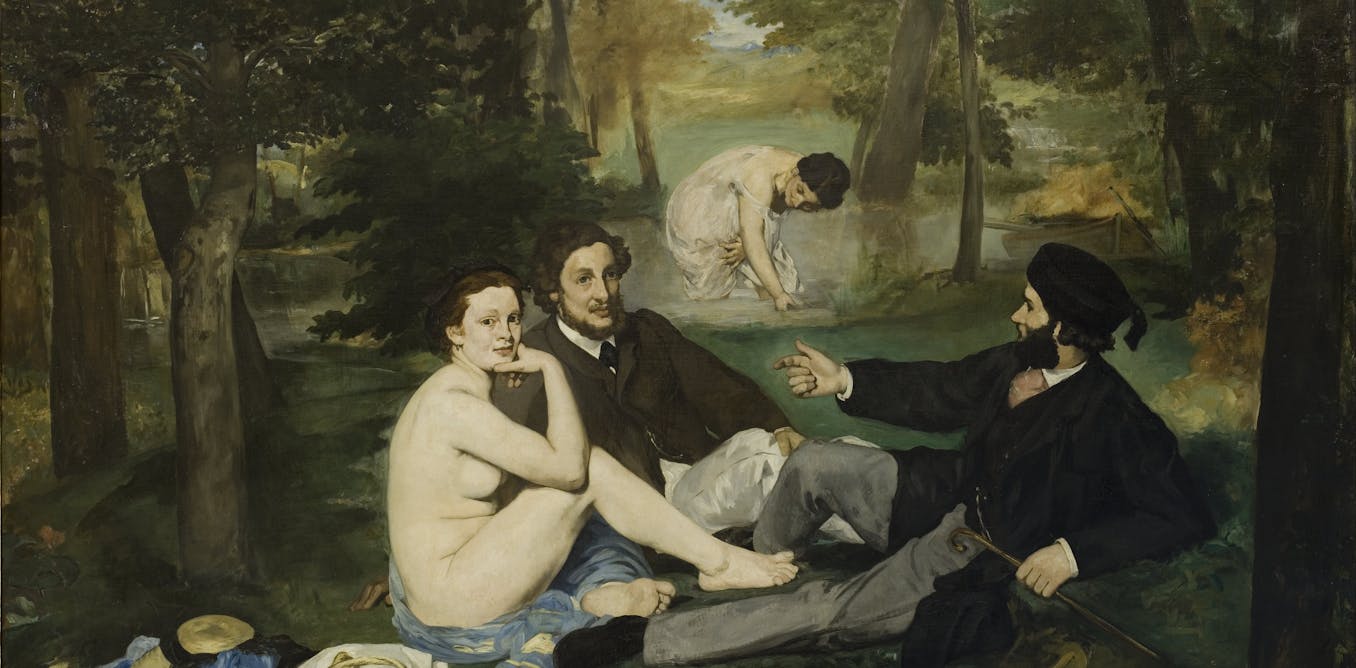
- Select a language for the TTS:
- UK English Female
- UK English Male
- US English Female
- US English Male
- Australian Female
- Australian Male
- Language selected: (auto detect) - EN
Play all audios:
I first came across modernism through the lens of postmodernism in the early 1980s. At that time postmodernism – explained here – was washing through the academy, promising to transform
everything by placing art, the most sophisticated theory, rock music, and television on the same continuum of analysis. One problem I soon noticed was that aspects characterised as
“postmodern” in visual arts could often be identified in modernism. For instance, postmodernism typically tells us that modernism sets up a rift between high and low culture. Yet modernism’s
challenge initially stemmed from breaking down barriers between high and low culture. During the late 19th and early 20th centuries, those making avant-garde art departed from classical
allegories, history painting and heroic portraiture in order to portray the immediate, everyday life in front of them. In Cubist works by artists such as Braque, Picasso and Gris, you won’t
find nymphs in the glen, but café tables, music sheets, product packaging, newspapers, wine glasses and bowls of fruit. Modernist art consciously engages with everyday life. The difference
is that it focuses on processes of representation. Manet, in his infamous Le Déjeuner sur l'herbe (main image), treats conventions of the nude as a form of pastiche, parodying its
convention of conjoining various sources to evoke a perfection never attained in any one mortal. Particularly after the first world war, one of the main aims was to make the latest aesthetic
offerings available to all social classes. This is true of early modernist design and architecture. Many innovations drew from proletarian sources such as theatre by German playwright
Bertolt Brecht or industrial production. The modernist tactic of flattening perspective and techniques for rendering realistic representations are formal innovations that appear to make art
more simplified and less skillful. Modernism is typified by a general commitment to exploratory experimentation. Yet it also comprises a wider process that elevates challenge, critical
autonomy and creative innovation. This questioning mode sets it apart from traditional cultural imperatives, accepted conventions, or academic rules that ensured some form of recognisable
cultural standards. Implicit in modernism’s challenge is the idea that predetermined rules, cherished precedents or even shared parameters of understanding need not necessarily govern or
guide future cultural expression. This is a new cultural horizon. The most immediate impact of such transformed cultural expectations is that innovative modernist art is not always well
understood or recognised when first produced. Famous examples include the bellicose initial reaction to Russian composer Stravinsky’s ballet score for The Rite of Spring in 1913, now
considered a 20th-century modernist classic. RAMIFICATIONS There are other consequences that are not so readily obvious, but they help to explain the wider cultural ramifications of
modernity. First, modernism does not mean that the past is simply forgotten or eliminated. Instead, works of the past are all treated as a type of archive of possibilities to be freely
adopted, re-evaluated, or even ignored, as changing historical and social circumstances permit. Second, if culture is historical, then it can also be transformed. The dictum “make it new!”,
issued by American poet Erza Pound in 1934, is not only a cry for innovation as a core artistic goal, but also implicitly upholds the proposition that a culture can be remade and reworked
according to changing circumstances. Third, modernism is part of a wider inquiry of self-reflexive scrutiny of one’s practices and knowledge claims. In science, falsification becomes
pivotal. In the arts, modernism accentuates alertness to art’s own historical and stylistic conditions of possibility, and even questions what art is. In the wake of modernism, it has become
a commonplace assumption that art will test established ways of perceiving things or even the establishment itself. But that does not mean that such challenge is always welcomed. For more
than 100 years, someone or other has complained that constant challenge risks tearing the social fabric apart, or artists have gone too far. The Weavers (_Die Weber_) written by German
playwright Gerhart Hauptmann in 1892 is a telling example of testing the boundaries of convention and socio-political acceptability. Prussian authorities imposed a ban on the play because it
sympathetically portrayed the Silesian weavers’ revolt of 1848. The Weavers became a popular success because it was able to reach broader audiences in the then emerging alternative,
working-class theatre venues. In fact, the play’s major innovation was to feature the workers’ revolt as its central “character”. There was also a utopian dimension to modernism that
harboured grand ambitions of resolving all social-cultural tension and achieving a higher resolution in art as well as at the social level. You can see this in Russian composer Alexander
Scriabin’s score for Mysterium which he started writing in 1903 – he envisioned it to be a synesthetic experience performed over a week in the Himalayas. The work culminates in the
revelation of the final mystery in which humanity dissolves and wondrously transforms into a higher life form. The score remained incomplete at the time of Scriabin’s death in 1915. IS
MODERNISM OVER? Well, it is certainly an old term. But the term “contemporary” has been around for a long time too. Postmodernism seems to have been and gone. Yet, the focus on “creative
innovation” is championed more than ever, but on a broader level that has extended well beyond the arts. Modernist artists working nearly a century ago seem more optimistic in retrospect,
but their hope was tinged with concern. In the wake of the first world war, there was widespread consternation in Europe that nothing so disastrous could happen again. If the mood was more
“utopian”, it often sprung from a perceived need to reinvigorate thinking and life in the aftermath of decayed aristocratic systems. Of course, worse could and did happen. But have we seen a
complete cultural paradigm shift in recent decades? One difficulty is that the general modernist propositions of challenge, self-scrutiny, and dissent are difficult to overturn or exceed
because critique necessarily confirms a commitment to them. One definite change is that art today is more concerned with investigating society’s failures, or exploring often-unacknowledged
tensions, particularly at the periphery of society – seen recently in Dark Heart at the 2014 Adelaide Biennial. This exploration may signal that one aspect of the modernist drive remains
undiminished — its critical side — while the utopian side has waned.


